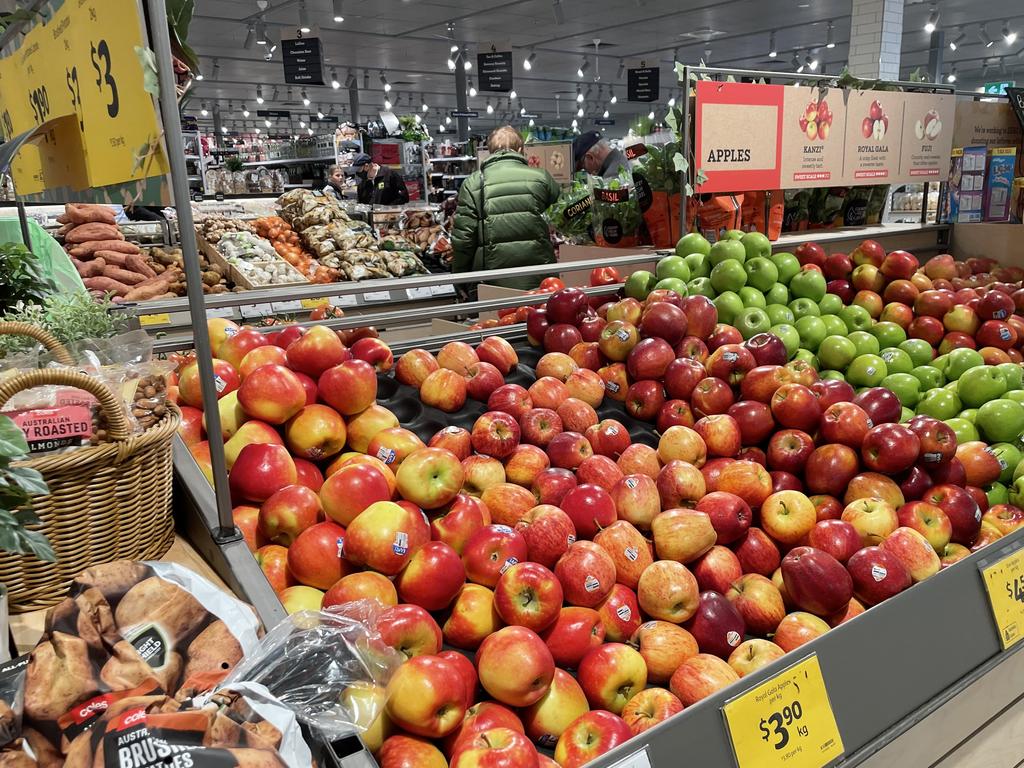Why the RBA has one last chance to smash inflation via interest rates

But parts of the Australian economy are moving into steep decline, so a further rate rise is a high risk move given that there is also a global slowdown and bank fears are returning to the US.
The so called “trimmed mean” annual inflation, which excludes large price rises and falls, was 6.6 per cent in the March quarter, down from 6.9 per cent in December. That’s still too high, albeit that the trend is down.
But what is really hitting consumers is food and alcoholic beverages, which rose at a sickening annual rate of eight per cent. This is a base consumer expenditure, and it is rising faster than both the overall inflation rate and wages. The supermarkets are letting the price flood gates open after years of restraint and wage pressure.
Because of what that could mean for wages, that’s an alarming figure for the RBA meeting, which will be the final gathering of the “gang of six” non-executive directors who carried out the unprecedented set of 10 interest rate rises.
Four of “the gang” were also there when rates were at token levels. One of those longstanding directors will step down five days later, and another on August 30.
Presiding over the meeting will RBA governor Philip Lowe, and there is almost no chance he will be reappointed when his term expires on September 17.
On top of the board’s agenda will, of course, be the latest consumer price index, which is still more than double the bank’s target of 2-3 per cent.
The official figures show the economy is slowing, but not as dramatically as the bank would like. The harsh reality is that interest rates take time to reduce inflation by throttling the economy, so curbing wage and price rise demands
Lowe is a traditional central banker, and he will not want to leave the RBA with a legacy of out of control inflation, especially as he knows the new governor will be looking to reduce rates.
New RBA director and former Fair Work Commission president Iain Ross will attend the June board meeting, and he also will not be happy to mark his new directorship with another interest rate rise. That’s why the May meeting is probably Lowe’s only chance to give the economy (including the supermarkets) one more kick and make it almost certain that the Lowe (and the “gang of six”) legacy will not be seen as having locked in high inflation.
But behind the scenes is a community drama of some magnitude. There is danger that just the bank was too slow to increase rates because its information systems did not deliver information on what was happening in real time, so there is risk that those information systems are still not attuned to what is happening in real time.
And sadly, there is no evidence that the new RBA plan will restore the Australia wide intelligence network. And the fact that board members have to spend a day a week on RBA means no CEO of a major retailer, transport or similar enterprise has that sort of spare time so can’t join and keep the RBA board informed about what is happening in real time.
As the largest Australian home lender, the Commonwealth Bank has the best knowledge as to what is about to happen in the mortgage belt and is alerting both business and the investment community that we are headed for a big rise in unemployment and a considerable slowdown in key sectors of the economy.
CBA says RBA’s massive 3.5 per cent interest rate rise since May 2022 takes it into “deeply restrictive territory” given mortgage payments will reach a record high of almost 10 per cent of household disposable income by the end of 2024. To that, we add an upward food price spiral.
Australia’s online global currency operation, Airwallex, tells us that its records show there is a strong Australian demand for payments for travel and for education. That would indicate that overseas students are returning strongly, but it may also indicate that in the local marketplace, families do not want to take their children out of private schools and are meeting the accelerating costs with sacrifices elsewhere.
Among older people, the strong share market is keeping superannuation balances high and giving people confidence to return to the international travel market after the long absence created by the Covid-19 years.
During Covid-19 and its aftermath, that “travel money” was spent in local markets. The retail sector needs those up-market consumers to continue spending, and the fact that they are returning to their old overseas travel habits is a danger sign.





Next week’s Reserve Bank board meeting in Perth is probably the last chance the central bank has to have one more swipe at inflation via interest rates.